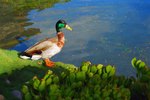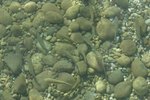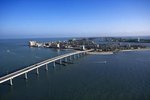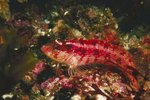The intertidal zone is an area where the ocean meets the land, especially that area that is affected by the changing tides. Due to the physical circumstances of this habitat (it is exposed to the air during low tide and submerged during high tide) it has several unique physical characteristics and is home to a diverse array of animal and plant life.
Animals
Animals living in the intertidal zone have developed a number of traits to help them deal with the changing physical circumstances. Many of them, such as snails, have developed means of keeping themselves moist during low tide while others, such as sea stars and anemones, possess suction cups that allow them to fasten onto rocks during high tide, thus ensuring that they are not washed away. Other animals that live in the intertidal zone include birds, fish (such as the black-faced blenny) and crustaceans such as crabs.
Plants
Numerous species of plants have also adapted to life in the intertidal zone. For example, numerous species of algae call this region home, and some varieties possess gas-filled bladders that allow them to get closer to the water’s surface and therefore gain more access to sunlight. Varieties of algae include green, brown and red. A number of flowering plants also grow in the intertidal zone, including surf grasses and eel grasses.
Physical Characteristics
The intertidal zone is characterized by a great deal of water movement, which can range from gentle to quite violent, depending on the weather conditions affecting the tide. In addition, standing bodies of water (known as tide pools) often form, although these are rarely permanent features. Furthermore, the temperature varies: while the water is typically moderate, the air can range from below freezing to extremely hot. Finally, the salinity of the intertidal zone varies widely, from sea levels of salinity to watered down by rainwater or runoff.
Sub-Zones
The intertidal zone is also divided into several subareas, each with its own characteristics. The spray zone, which is nourished by ocean spray, is home to only a few species, such as limpets and acorn barnacles. The high tide area is only submerged during the high tide, and the extreme environment is home to only a few plants, although many animals (such as the hermit crab) live here. The middle tide zone is submerged twice during the day and is therefore home to a wide variety of plants and animals such as green algae, sea lettuce and shrimp. The low tide zone is submerged for long periods of time (except during low tide) and is home to a large amount of life with great biodiversity. It is home to such life as sea cucumber, sea palms and limpets, which can grow to larger sizes due to the steady presence of water.
References
Photo Credits
-
Thinkstock/Comstock/Getty Images





